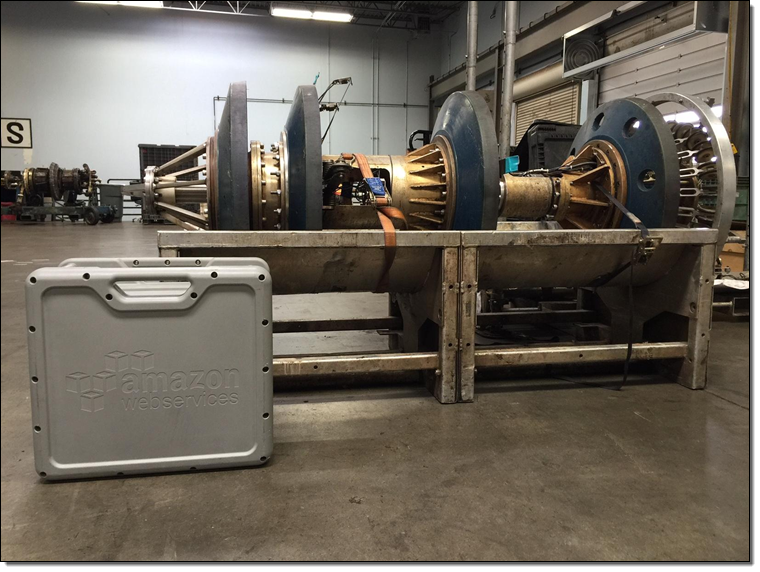Cloud infrastructure provider Amazon Web Services (AWS) today announced that it has developed a larger version of its Snowball storage server for shipping data from companies’ data centers to the AWS public cloud.
When AWS first introduced Snowball in October, it had a 50TB capacity. Now companies have a 80TB option.
“If you are transferring data in or out of the US East (Northern Virginia), US West (Oregon), US West (Northern California), or AWS GovCloud (US) Regions using Snowball you can choose the desired capacity,” AWS chief evangelist Jeff Barr wrote in a blog post. “If you are transferring data in or out of the Europe (Ireland) or Asia Pacific (Sydney) Regions, you will use the 80 terabyte appliance.”

Above: Whoa, a Snowball at GE.
Support for Snowball in more AWS data center regions is on the way, Barr wrote.
The addition of the 80TB Snowball is important because it suggests at least some companies want to migrate a great lot of data to AWS, more than 50TB anyway.
Amazon’s biggest competitors in the public cloud business, Microsoft Azure and Google Cloud Platform, don’t offer anything like Snowball, so it’s still a distinctive element of AWS.
Normally AWS strives to stand out by introducing new cloud services, hardware infrastructure to be accessed as a service, and geographical expansions; Snowball is part of Amazon’s broader attempt to appeal to larger companies that have traditionally operated on-premises infrastructure. Also along those lines, last year AWS added on-premises support for its CodeDeploy continuous-delivery service.
The 80TB Snowball carries a $250 “service charge,” compared with $200 for the 50TB model. It’s free to use onsite for 10 days and $15 per day after that. UPS shipping costs are not included.
VentureBeat's mission is to be a digital town square for technical decision-makers to gain knowledge about transformative enterprise technology and transact. Learn More

